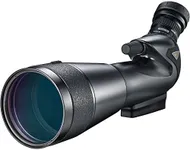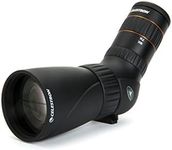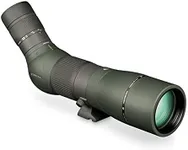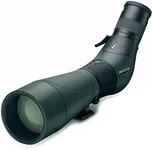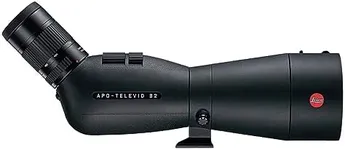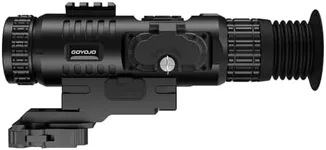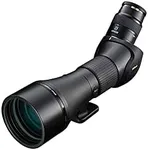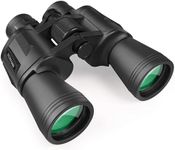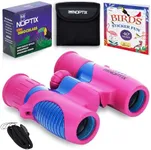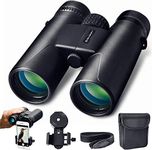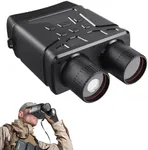Buying Guide for the Best Birding Scopes
Choosing the right birding scope can greatly enhance your birdwatching experience. A birding scope, also known as a spotting scope, allows you to see birds in great detail from a distance. When selecting a birding scope, it's important to consider several key specifications to ensure you get the best fit for your needs. Understanding these specs will help you make an informed decision and enjoy your birdwatching adventures to the fullest.MagnificationMagnification refers to how much closer the scope can make distant objects appear. This is important because higher magnification allows you to see more details of the birds. Birding scopes typically have magnification ranges from 15x to 60x. Lower magnification (15x-30x) provides a wider field of view and is easier to use for tracking moving birds. Higher magnification (40x-60x) offers more detail but can be harder to stabilize and may require a tripod. Choose a magnification range based on your birdwatching habits; if you often watch birds in open areas, higher magnification might be beneficial, while lower magnification is better for forested areas.
Objective Lens DiameterThe objective lens diameter is the size of the front lens of the scope, measured in millimeters. This spec is important because a larger objective lens allows more light to enter the scope, resulting in a brighter and clearer image, especially in low-light conditions. Birding scopes usually have objective lens diameters ranging from 50mm to 100mm. Smaller diameters (50mm-60mm) are more portable and lighter, making them easier to carry around. Larger diameters (80mm-100mm) provide better image quality but are bulkier. Consider where and when you will be using the scope; if you often birdwatch at dawn or dusk, a larger objective lens might be more suitable.
Field of ViewField of view (FOV) is the width of the area you can see through the scope at a specific distance, usually measured in feet at 1,000 yards. A wider field of view is important for locating and tracking birds, especially those that move quickly. Birding scopes with a wider FOV make it easier to spot birds and follow their movements. FOV can vary significantly between scopes, with wider FOVs being more beneficial for beginners or those watching birds in dense areas. If you prioritize ease of locating birds, opt for a scope with a wider field of view.
Eye ReliefEye relief is the distance from the eyepiece to your eye where you can still see the full field of view. This is particularly important for eyeglass wearers, as insufficient eye relief can make it difficult to see the entire image. Birding scopes typically offer eye relief ranging from 12mm to 20mm. If you wear glasses, look for a scope with at least 15mm of eye relief to ensure comfortable viewing. For those without glasses, shorter eye relief may be acceptable. Consider your comfort and whether you wear glasses when choosing the eye relief.
Weight and PortabilityWeight and portability are crucial factors, especially if you plan to carry your scope over long distances or through rough terrain. Lighter scopes are easier to transport and handle, but they may compromise on some features like larger objective lenses. Heavier scopes often provide better image quality and stability but can be cumbersome to carry. Think about how you will be using the scope; if you need to hike to your birdwatching spots, a lighter, more portable scope might be more practical. If you mostly birdwatch from a stationary position, a heavier scope with better optics could be a better choice.
WeatherproofingWeatherproofing refers to the scope's ability to withstand various weather conditions, such as rain, fog, and dust. This is important because birdwatching often takes place outdoors in unpredictable weather. Look for scopes that are labeled as waterproof and fog-proof, which means they are sealed to prevent moisture and dust from entering. This ensures that your scope remains functional and provides clear images even in adverse conditions. If you frequently birdwatch in wet or humid environments, prioritize a scope with good weatherproofing to protect your investment and ensure reliable performance.
